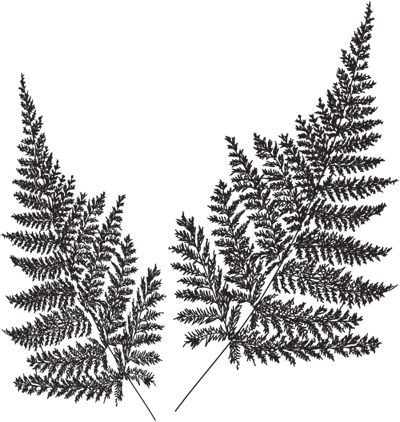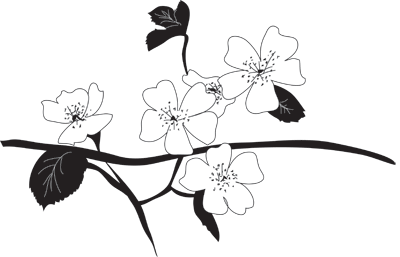Books & Prose
Plants Out of Balance
Alas! A favorite plant—I thought it a hard native, wild but with a homely beauty, fragrant, white single roses on a panicle, hips to feed the birds—is invasive! A gardening friend told me, “The agricultural extension services pushed that plant in the 1930s as a ‘living fence’ because it’s so hardy. But now it’s crowding out other plants.”
Then I saw it in print. Invasive Plants, Weeds of the Global Garden, by the Brooklyn Botanic Garden, says the Rosa multiflora is an “invader from Maine to Minnesota and south to Alabama” and a “noxious weed in several states.” Such a sweet scent! Such a bright pinky-white cluster of blooms! And so hardy!
That’s the problem. It isn’t a thug in my garden but in other areas. Many, if not most, plants we commonly put in our gardens come from other ecosystems (this rose came from Asia in 1860). A better moniker than “invasive” would be “out of balance.” In its original habitat, this rose had insects and soil limitations; but in our ecosystem, there are no bugs that enjoy its leaves or seeds and keep the balance. The plant doesn’t have a niche in our ecosystem; it’s like a kid on a candy high—spreading willy-nilly.
Once a plant spreads, by birds or by word of mouth (it’s so hardy!), it can keep going until it finds an area to take over. You may have seen the purple knapweed (Centaurea species) that grows by New England roadsides as an occasional visitor. Yet in the upper Great Plains it is the scourge of open spaces, where that particular ecosystem of soil, sun, rain, and lack of competing pests gives it free rein.
Many garden plants have “escaped cultivation” to become pests. The Japanese, Chinese, and common privet are labeled invasive by a Kentucky herbarium curator. The winged euonymus (Euonymus alatus), the burning bush touted for its autumn color, survives in damp, dry, sunny, or shady areas (read, hardy) and is a problem in the East and Midwest woodland understory, the habitat of native laurels and viburnum, among others. Japanese honeysuckle (Lonicera japonica) is invasive in the same area; it has black or purple berries and separate leaves (native species have red to orange berries and leaves that join around the stem). A once-unique plant, the tamarisk tree—what feathery purple blooms! what an exotic heritage (Eurasia)!—is choking riverbank vegetation in the Southwest; it hogs groundwater, increases salinity through its dropped leaves, and is useless as a food for wildlife.
What to do? Don’t plant the invasive plants. Ever. I’m making up that rule, but I suspect it’s a good one. Be ruthless in your choices. My little rose will have to go, because some hungry blue jay can replant it ten miles away, to be replanted later by another bird, and so on. This book says even the so-called sterile purple loosestrife produces viable seeds, so don’t plant it. Catalogs are no help; many list the Russian olive (Elaegnus angustifolia) and autumn olive (E. umbellate)—hardy and drought-tolerant. Next time you drive down to Cape Cod, notice along the roadside that slivery green shrub, almost a tree. It’s the escaped olives.
Instead, plant the native plants that these introduced species are crowding out (worried about modern extinctions? for the Franklinia tree, for example, it’s already too late; species introduced with the original colonists in the 1600s had taken its place in the Mid-Atlantic ecosystem by the 1800s). Try the New England Wildflower Society, the Audubon Society, or the Massachusetts Department of Agriculture for sources of native vegetation and books on the same. If you think you want an exotic “trophy” plant (I once wanted a tamarisk), find out its origins. This is worth thinking about and acting on, because making these choices will sustain instead of degrade the ecosystem.
 We need look no farther than the Somerville bike path. Japanese knotweed (Fallopia japonica, or Polygonum cuspidatum), which covers great swaths of the path, our wild places, and our yards, was introduced by Frederick Law Olmstead as an excellent ornamental. It is, of course, hardy. But in it’s place we could have ten other species that cohabit our Northeast woodland ecosystem.
We need look no farther than the Somerville bike path. Japanese knotweed (Fallopia japonica, or Polygonum cuspidatum), which covers great swaths of the path, our wild places, and our yards, was introduced by Frederick Law Olmstead as an excellent ornamental. It is, of course, hardy. But in it’s place we could have ten other species that cohabit our Northeast woodland ecosystem.
Native Alternatives to Invasive Plants, Brooklyn Botanic Garden. www.bbg.org
A Guide to Invasive Plants in Massachusetts, Paul Somers, Rachel Kramer, and Bill Brumback. Massachusetts Division of Fisheries and Wildlife, 2nd edition, 2008.
New England Wildflower Society, www. newfs.org
© Anna M. Warrock
Originally published in somewhat different form in the Somerville Garden Club newsletter.
